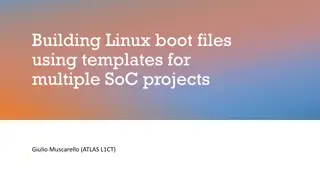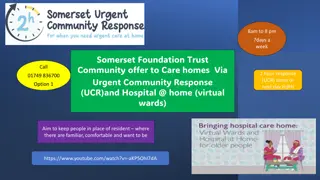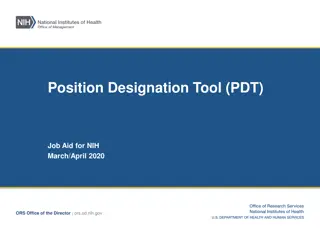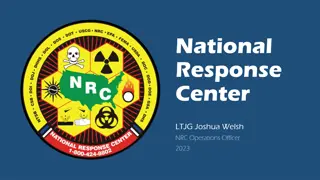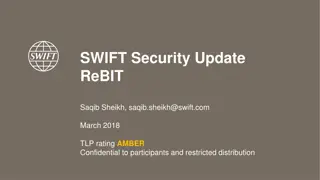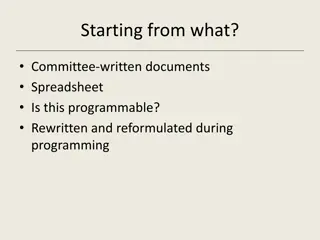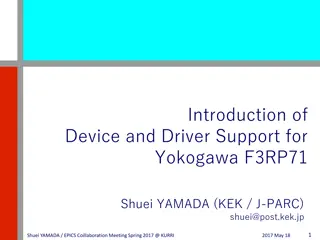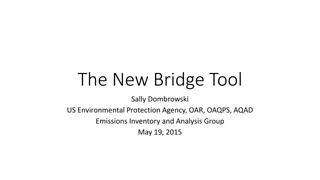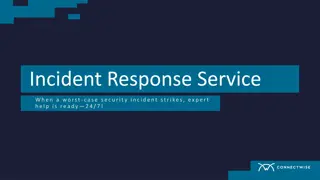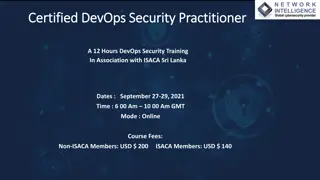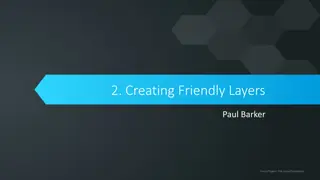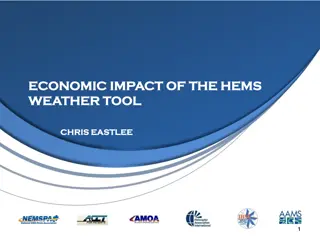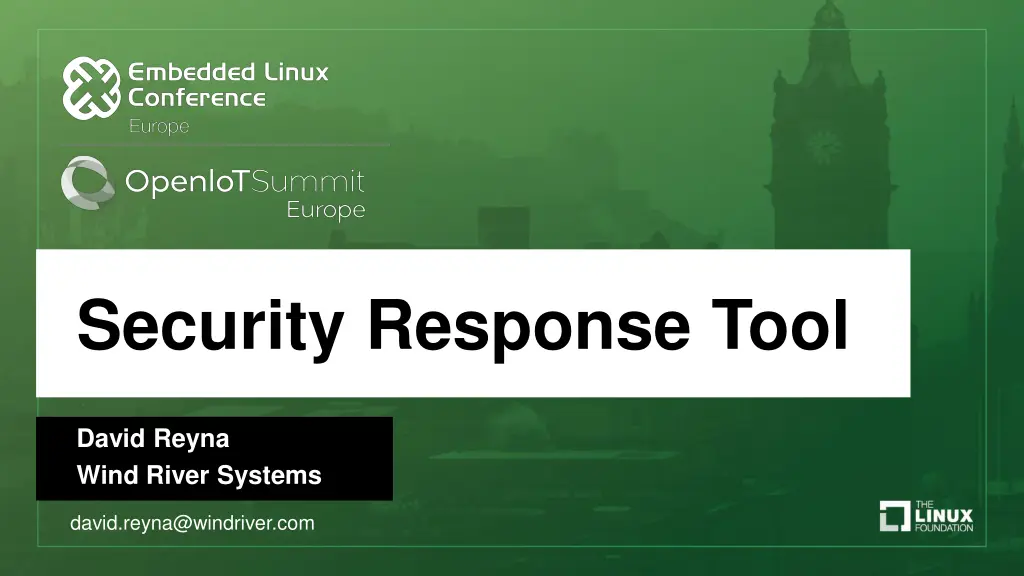
Effective Security Response and Management Strategies
Discover the challenges of managing security defects, best practices for maintaining product security, and introducing a new Security Response Tool. Learn about CVEs, general security patch workflows, and the growing volume of security data in today's tech landscape.
Download Presentation

Please find below an Image/Link to download the presentation.
The content on the website is provided AS IS for your information and personal use only. It may not be sold, licensed, or shared on other websites without obtaining consent from the author. If you encounter any issues during the download, it is possible that the publisher has removed the file from their server.
You are allowed to download the files provided on this website for personal or commercial use, subject to the condition that they are used lawfully. All files are the property of their respective owners.
The content on the website is provided AS IS for your information and personal use only. It may not be sold, licensed, or shared on other websites without obtaining consent from the author.
E N D
Presentation Transcript
Security Response Tool David Reyna Wind River Systems david.reyna@windriver.com
Security Response Management Risk, Cost, and Best Practices in an Imperfect World Keeping our products secure is a requirement for survival Security data is available, but can be a flood of data with varying quality and completeness Managing security defects can be very inefficient, resulting in high costs We need to share best practices, knowledge, awareness, automation, and tools!
Agenda (for DevDay 2019) What this presentation is about Managing the response to the exponentially growing stream of potential security vulnerabilities in our upstream open source content Maintaining the trust between our customers and our products Introducing the new open source Security Response Tool! What this presentation is not about Fixing CVEs Limitations of upstream CVE databases, the changing nature of vulnerabilities (though IoT is trending) CVE Scanners (static, build)
CVEs CVE (Common Vulnerability Enumerations) The enumerations of the community tracked security vulnerabilities, separated by the year reported (e.g. CVE-2018-12345) Vendors/Sources MITRE: Manages the list of CVEs NIST (National Institute of Standards and Technology): manages the National Vulnerability Database (NVD) of CVEs Hardware Vendors, Software Maintainers, Distros Many vendors track and share CVE's relevant to their product Many CVE aggregators also available (e.g. cvedetails.com) Mailing lists, websites, and forums (public and private) Preview of coming issues, place to discuss issues
General Security Patch Workflow Upstream CVE Sources Gather data/fixes/info Publish CVE Data You (OS Vendor/OEM/etc.) Scan upstream CVEs Manage CVE response Fix CVEs Create patches Customer Receive patches Test/deploy ( Managed Workflow)
Volume of CVE Data: Issues Volume of CVEs is 1000+ per month and growing Every new CVE must be evaluated, even if only a percentage may be applicable Costly in sheer numbers and required analysis overhead given the quality limitations Incorrectly categorizing a vulnerability can be even more costly in customer escalations and trust
Every CVE Needs to be Triaged You need to know what CVEs affect your product and customers Customer: Am I affected? You also need to know what CVEs do not affect your product and customers Customer: Are we not vulnerable, or did you miss that one?
Issues in CVE Triage CVEs may only have a brief or incomplete description CVE affected product list (CPEs) may have gaps, errors, unexpected version deviations, even be empty CVE content may be misleading, mentioning one package when it actually affects a different package CVEs may have few, inaccurate, or missing content links (discussion, reproducers, patches) CVE status changes continually as new information is discovered and shared Sometimes delays in content updates (dark CVEs)
Why System Analysis is Not Enough Can be very valuable in targeting product specific review activities Tells you of known vulnerabilities, but not what you are NOT vulnerable to Scans almost exclusively in the category of 'needs investigation Depends on known data Example: Nessus
Goal of Security Response Automate as much of the process as possible CVE data gathering, updating, change notifications Defect update polling, with filtered change notifications Report tools for management and customers History and audit tracking Use multiple sources NIST, MITRE, distros, oss-security, linux-distros (private list), Aggregate the data Central database, central document store
Introducing the SRTool Wind River has developed a tool called the Security Response Tool based on its cumulative experience Its goal is to address the process pain points and inefficiencies, to scale with a limited staff, and to implement best practices Wind River has shared this with open source via Yocto Project
SRTool: Guided Incoming CVE Triage CVE incoming rate 1000+ a month View for fast review and triage Heuristics from the previous defects to help guide the filtering process
Why not just use defect system Defect systems are often poor security management systems Defects are per product, CVE's are across products An issue may need to be tracked before a CVE is created or published Hard to manage embargoed data in defect systems Projects are normally public to entire product groups Would require shadow projects Would require a shadow project per authorized access list Awkward promoting private issues to public defects
SRTool: Functional Layout Web Interface Reports External Sources SRTool Engine MITRE Report scripts Public Facing DB NIST SRTool Data Base (SQL) | CVE | Vul | Inv | Defect | Notify | Other Custom data scripts Jira/Bugzilla Sustaining Back end scripts Data: Bulk files, Data: cached CVEs Download cache cron job (trigger incremental updates)
How You Can Adopt The SRTool Clone the SRTool code base Automatically receive the upstream CVE data Use simple modular extensions to instantiate: Your products Your defect system integration (sample Jira integration available) Your custom reports Your business rules (e.g. public CVE publishing) See this link for details: https://wiki.yoctoproject.org/wiki/Contribute_to_SRTool# Adapting_SRTool_to_your_Organization
Conclusion There is quite a wealth of vulnerability information available. With knowledge, awareness, adaptability, and automation, we can manage this struggle. We need to spend people s time on the actual problems, not the process The SRTool community page is hosted here: https://wiki.yoctoproject.org/wiki/Contribute_to_SRTool Use these links to learn more: https://lists.yoctoproject.org/listinfo/yocto-security david.reyna@windriver.com (SRTool maintainer)


